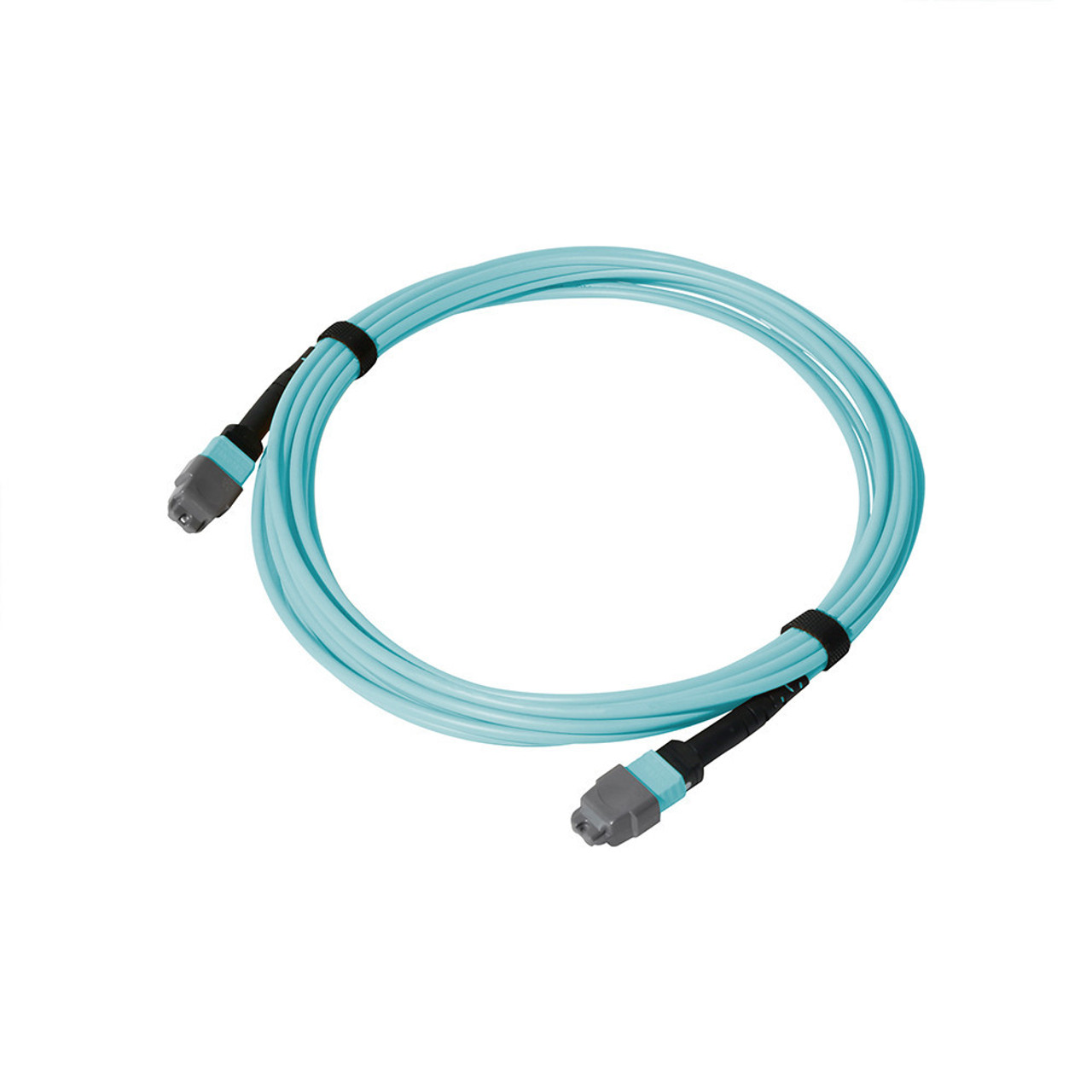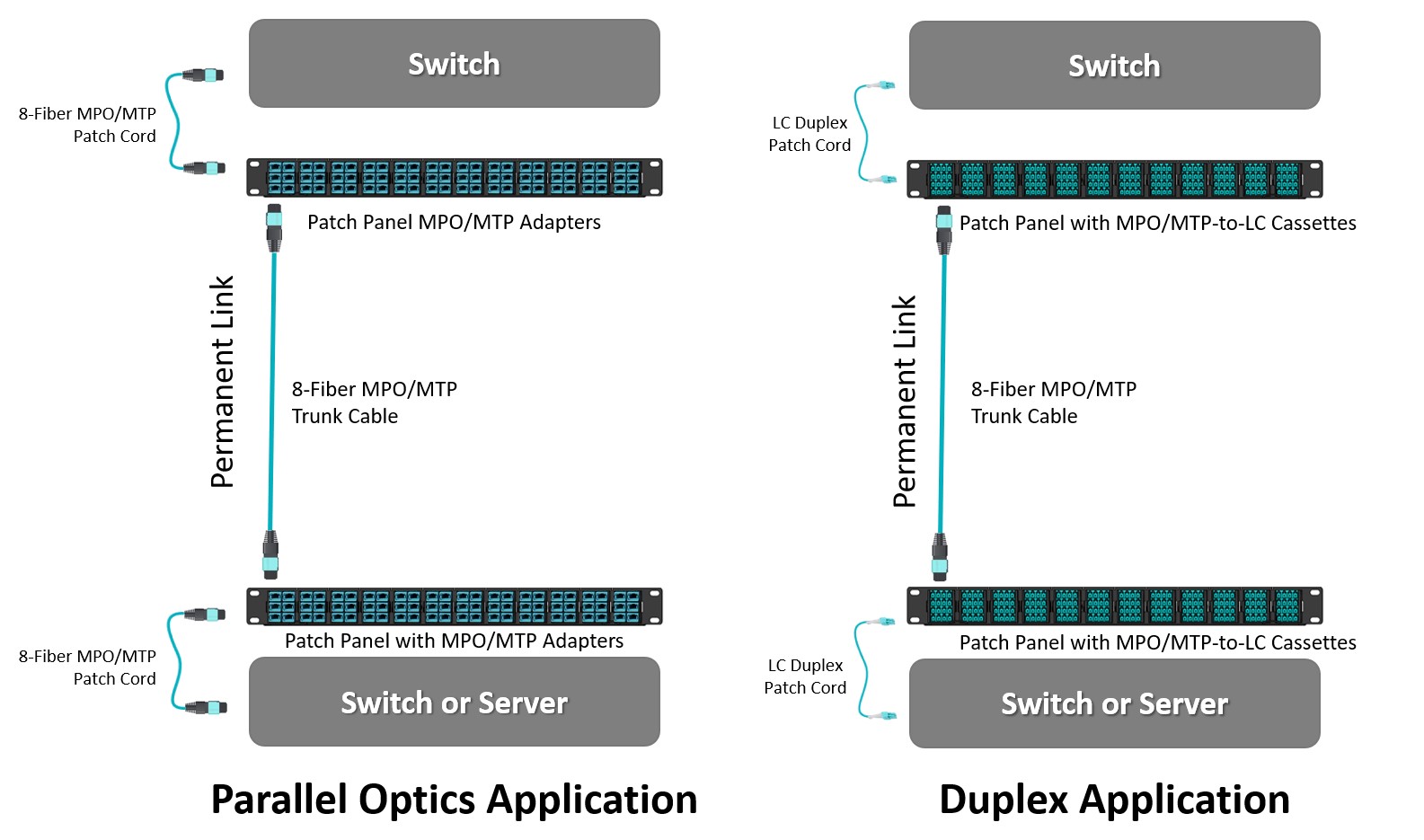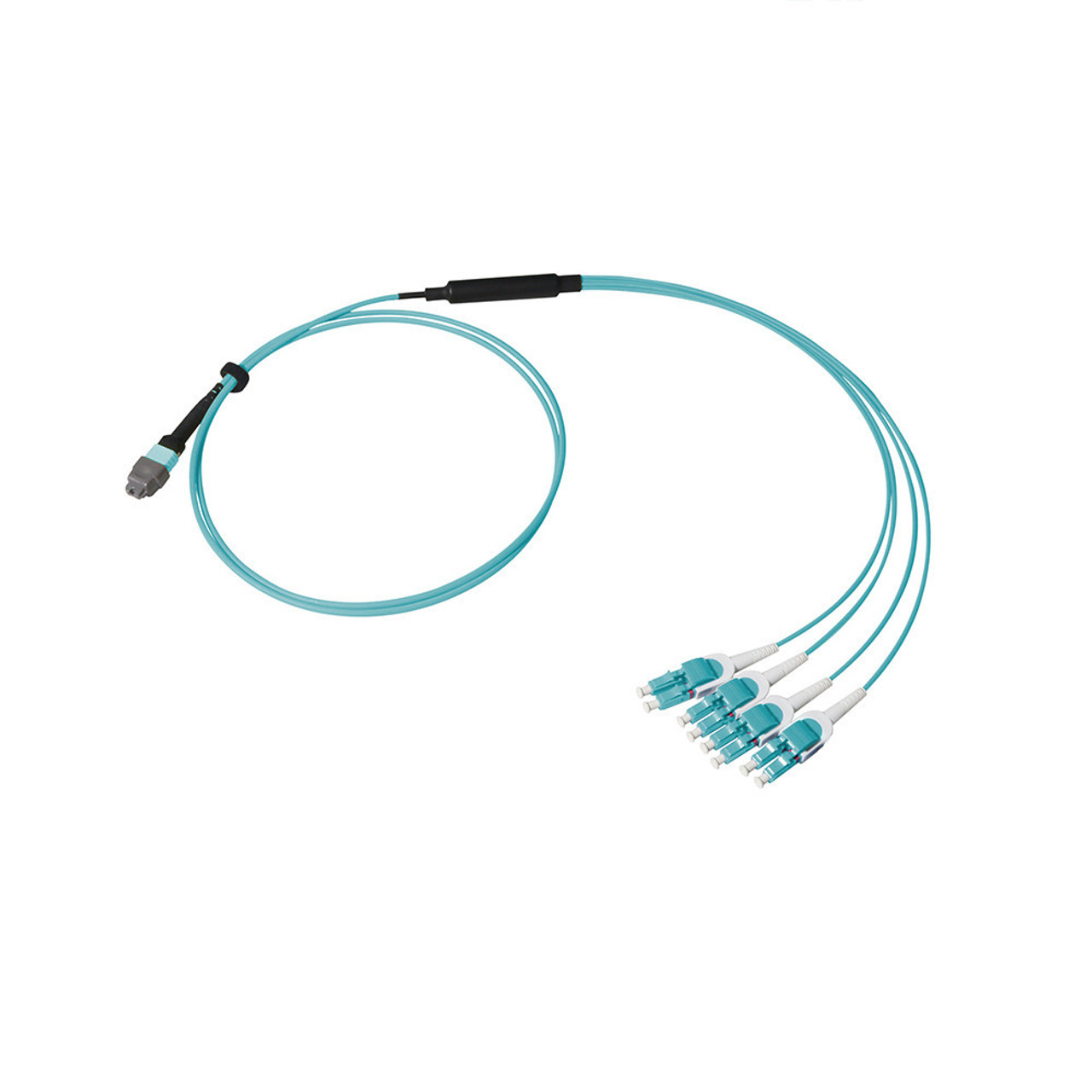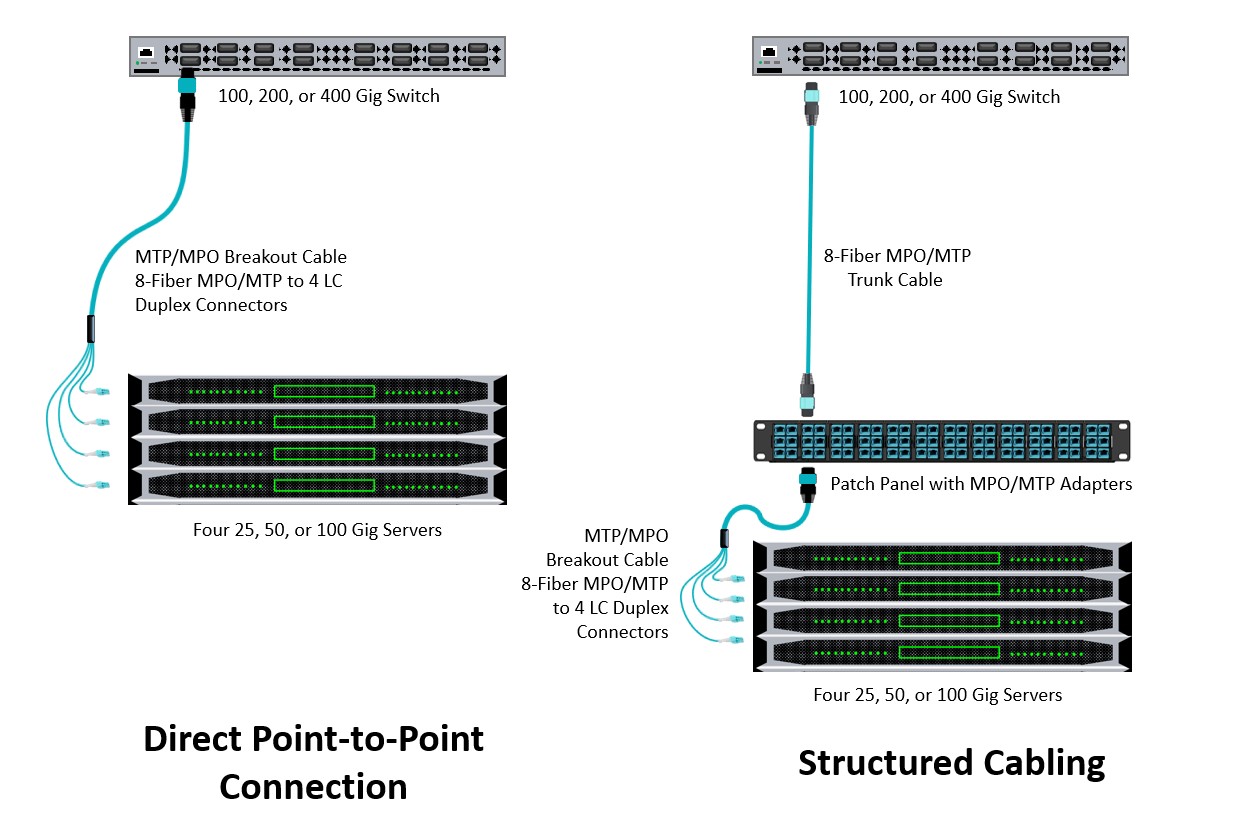MTP/MPO Trunk Cables vs. Breakout Cables
- Mar 11th 2024

In data center environments, fiber connections between equipment such as switches, servers, and storage devices are achieved via cable assemblies, which is a generic term that refers to any collection of fiber strands grouped together within a cable and terminated to connectors. MTP/MPO trunk cables and breakout cables are two of the most common types of cable assemblies used for data center equipment connections. Knowing the difference between the two, and when and where you should use them, is vital to correctly ordering and deploying the solution you need for your specific application. Let’s take a closer look.
MTP/MPO Trunk Cables

MTP/MPO trunk cables feature multiple fibers under one sheath and typically have the same type of MTP/MPO connectors on both ends—8-, 12-, 16-, 24-, or 32-fiber MTP/MPO connectors. They are typically used to form a permanent link between switches or between switches and servers in a structured cabling environment. The permanent link is the portion of a channel that is fixed, meaning that it doesn’t change and does not include any equipment or patch cords used to connect the equipment. In a permanent link, one end of a trunk cable plugs into the back of a patch panel that connects to a switch and the other end plugs into the back of a patch panel that connects to another switch or a server. The actual equipment connections are made via patch cords at the front of the patch panels.
MTP/MPO trunk cables can be used in both parallel optic and duplex applications. In duplex applications, MTP/MPO trunk cables connect patch panel cassettes that feature multiple duplex connectors at the front (i.e., MTP/MTP-to-LC cassettes) for connecting to duplex equipment. The graphic below shows an example of an 8-fiber MTP/MPO trunk cable used to establish permanent links between equipment in a parallel optic and duplex application.

With multiple fibers under one sheath and multi-fiber MTP/MPO connectors, MTP/MPO trunk cables offer the benefit of fast, plug-and-play deployment of high-density permanent fiber that reduces installation time, saves pathway space, and provides a simple, clean networking setup. They also support scalability by allowing for one-time deployment of fixed cabling between functional areas, with all moves, adds, and changes made using patch cords at the front of the patch panels.
MTP/MPO Breakout Cables

MTP/MPO Breakout cables (sometimes called fanout cables) are different than trunk cables in that they use MTP/MPO connectors on one end and duplex connectors (e.g., LC, SN, MDC) on the other end. These cables support breakout applications where one high-speed MTP/MPO switch port connects to multiple lower-speed duplex switch or server ports. For example, a single 100, 200, or 400 Gig switch port with an 8-fiber MTP/MPO interface can break out to four duplex 25, 50, or 100 Gig server connections. The primary benefit of this type of application is to maximize switch port density and port utilization for lower overall costs.
MTP/MPO breakout cables can connect directly to equipment at both ends, forming the entire channel. They can also be used with structured cabling as equipment cords in conjunction with MTP/MPO trunk cables and patch panels. Below is an example of breakout cables used to support multiple lower speed connections from a single high-speed connection in direct point-to-point and structured cabling configurations. We also carry MTP/MPO Elite Trunk Cables.

How to Choose Between Trunk Cables & Breakout Cables
When it comes to choosing between MTP/MPO trunk cables and breakout cables, the primary considerations are your application and configuration. If you need to create permanent links between patch panels in either parallel optic or duplex applications, MTP/MPO trunk cables are an ideal option for saving space and speeding deployment. But if you want to leverage a single high-speed parallel optic switch port to support multiple lower-speed duplex switches or servers, then an MTP/MPO breakout cable is right for you. The following table provides an overview comparison.
| MTP/MPO Trunk Cables | MTP/MPO Breakout Cables | |
| Fiber Type | Multimode or Singlemode | Multimode or Singlemode |
| Application Ty[e | Parallel Optics OR Duplex | Breakout (Parallel Optics TO Duplex) |
| Applications | 10, 25, 50, 100 Gig (Duplex) 100, 200, 400 Gig (SR4/VR4/DR4/FR4) 800 Gig (SR8/VR8/DR8/FR8) |
4X10, 4X25, 4X50, 4X100, 8X100 Gig |
|
Typical Configuration |
Permanent Link | Channel or Equipment Connection |
| Connector Type Side 1 | MPO/MTP Connectors | MPO/MTP Connectors |
| Connector Type Side 2 | Same as Side 1 | Multiple duplex connectors |
The good news is that CablesPlus USA offers a complete range of both multimode and singlemode MTP/MPO trunk cables and breakout cables available in multiple MTP/MPO and duplex connector types. We also carry patch panels, adapters, and cassettes to help you build manageable, easy-to-deploy structured cabling for all your switch-to-switch and switch-to-server connections in any data center application. And if you need help determining which type of MTP/MPO cable assembly is right for your specific deployment, we’re always ready to help.
